A plant nursery is an ideal way to share your passion for plants. By growing and propagating your own plants, you can highlight the ones you love in your yard, and inevitably, you end up with extra plants to share.
To cultivate a population of plants for your own use or for sale, whether in vegetable or ornamental gardens, you will need a dedicated area with a controllable environment; you will need a plant nursery.
How can you make a plant nursery? Read this article to learn how to build a nursery for all the plants you want to grow.

Table of Contents
What Do You Need to Build a Nursery for Plants?
Here are nine things that you’ll need to build your plant nursery:
1. Land or Space
Of course, plants need land to grow. Open land is a requirement for trees and shrubs, but herbaceous plants often need to be started in a greenhouse under a controlled environment.
The more plants you want to grow in the nursery, the larger the space that you’ll be needing. Look locally for open land suitable for growing, taking into consideration available water, sunlight, and soil conditions.
If you have a larger backyard, designate a section to growing your own plants and possibly putting up a greenhouse for extended season growing.
Consider carefully the USDA zones of your growing space and the plants you want to cultivate. Plants hardy to warmer zones than your location will require a greenhouse or hothouse for at least part of the year when the temperatures dip.
2. Light Exposure
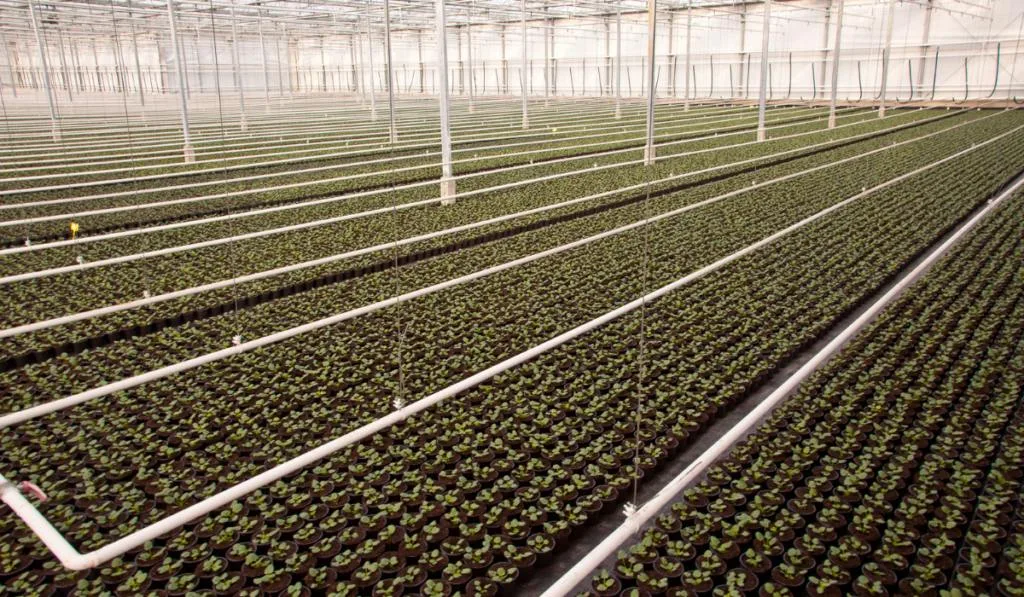
One of the most crucial factors that you must consider before starting a plant-growing business is how much sun exposure your plants need and will get. Remember that your nursery will likely house many different plants with specific requirements.
Every plant has its lighting requirements, so if you grow all your plants at the same spot, some will do well while others will die.
This is why you must research the lighting needs of your plants before starting the nursery. You should make use of plant industry sources, seed catalogs, and local landscapers to know the best exposure for each plant.
When building the greenhouse of a nursery, make sure to design in different sections with unique light exposure so that each crop can be grown under the right light.
3. Water
Water is an essential part of growing plants. The secret of many nurseries growing the most beautiful plants is knowing when and how to water their plants.
If you want the appearance of your nursery plants to stand out, you need to research the watering needs of your plants. Note that different plants have different watering needs.
Municipal water may not be an option to use because of the cost and enormous amount that nurseries use. Having a water source on the property may be the only option depending on your location.
Watering is also one of the most time-consuming activities of running a nursery. If you do not want to manually water your plants, you should research installing an irrigation system for your plants.
4. Propagation Methods (Seeds or Cuttings)
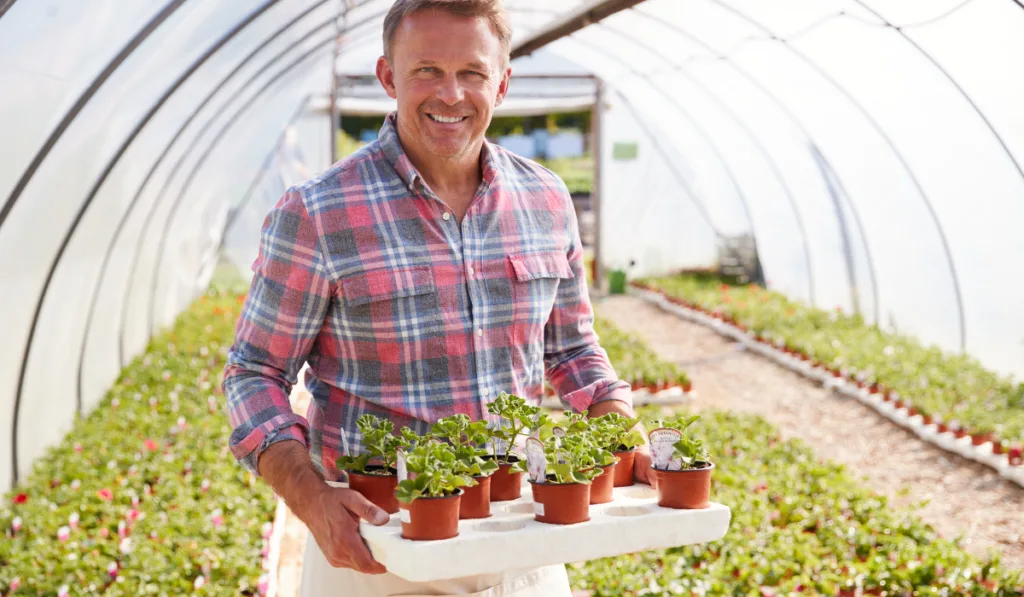
How will you be starting your plants? Some plants are possible to grow from seeds while others that do not produce seeds quickly or don’t have reliable germination rates will need to be started from cuttings. It is up to you to research and decide the best growing technique for a specific plant and remember that every crop is unique.
If the plant can grow from seeds, buy seed from a reputable seed company or nursery. If the plant requires cuttings, making sure you start with healthy cuttings is imperative.
The way you start your cuttings also matters. For example, some people who want a strictly organic and natural garden may not want you to start their seeds in plastic containers. Others such as hydroponic gardeners may not want plants that have ever grown in soil.
This means that you might have different growing techniques for the same type of plant depending on your market.
5. Substrate
After deciding what you will be growing, it is time that you invest in a nutritious and suitable substrate for your plants. While plants can grow in topsoil with ease, potted plants need potting mix because regular soil may be too heavy and compacted for them. Also, the ingredients and mixing ratio of your substrate depend on the type of plant, so extra research is needed.
While some plants such as succulents need an airy substrate in which their roots can breathe easily, other plants like vegetables only need their substrate to be well-drained (so long as it is nutritious).
6. Nutrients
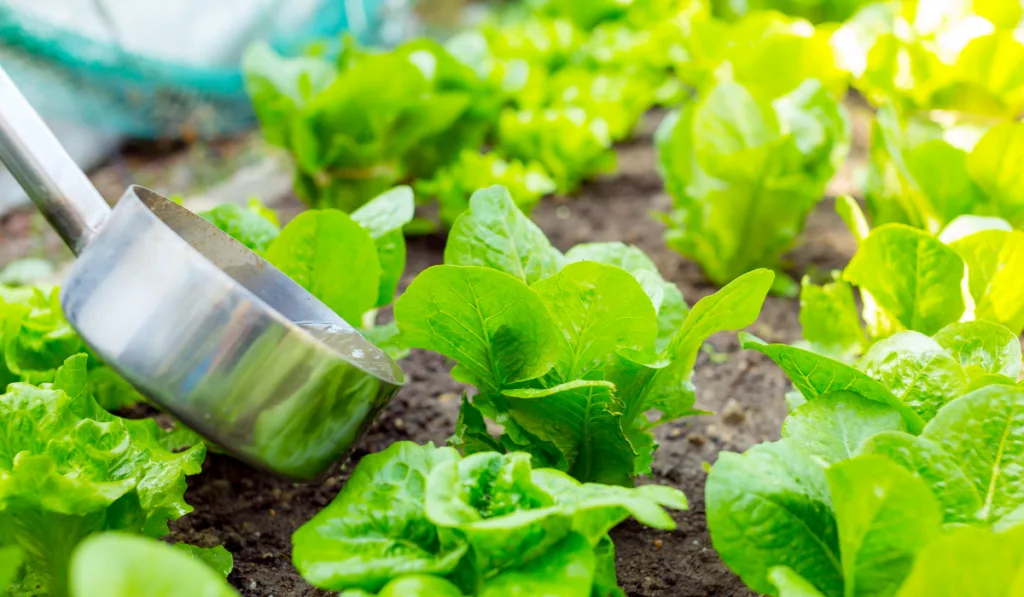
After getting the substrate for your plants, it is time to get the nutrients which your plants need to grow. Here are some sources of nutrients for plants:
- Inorganic fertilizer: You may need to buy sources of nitrogen, potassium, phosphorus, iron, magnesium, and other nutrients for your plants. The mixing ratio will depend on the type of plant that you want to feed.
- Decomposed manure: Decomposed manure is simply the manure of farm animals such as chickens and cows. This manure has to have been exposed to the sun for over ten days and to no longer burn plants. As such, it is not advisable to apply manure to new seedlings. If this is your main source of nutrients, mix the manure with the soil at least a month before planting seeds in it.
- Compost: Compost does not just enrich the growing medium, it amends and improves the structure for healthy root growth.
- Coffee grounds: Coffee grounds are rich sources of nitrogen for your plants.
- Legumes: Legumes refer to plants such as beans, soybeans, and peas that can fix nitrogen into the soil with the help of complementary bacteria. If you can plant them in your nursery as cover crops, they can help enrich the soil for other plants.
Nutrients are essential for your plants, so make sure that you feed them when you should. Remember that you need to research the nutrient needs of your plants.
7. Mulch
Mulch may not look like much, but it is another secret of nurseries. Mulch helps to keep the substrate uniformly moist as well as protect the plants from pests and weeds. Here are some types of mulch that you can use:
- Wood shavings or Sawdust: Ensure that the sawdust pieces are not too small so that they do not turn to dust when you are using them.
- Tree bark and wood chips: Both products help to enrich the soil as they are broken down by soil organisms.
- Hay or straw: If you have a supply of these products, you can use them as mulch. Just make sure that you slice them into smaller pieces so that they can be well-arranged on the soil.
- Pebbles: If you want your plants to look exceptionally beautiful for your customers when they are on display for sale, make use of pebbles. Note that they can attract extra costs for the plants.
- Sand: You can also make use of sand as mulch if you prefer a clean substrate.
Remember that it is not a good farming practice to expose your plants’ base fully to the sun while growing them.
8. Equipment

Here is some basic equipment that you need to start a nursery:
- Pest repellants: You need to invest a lot in repelling pests off your nursery if you want to grow healthy plants. Repelling bulbs, insecticides, sticky cards, and other products are good repellants.
- Fans or heaters: To grow your plants in a controlled environment, you must be able to control air temperatures. Fans circulate air to manage humidity and temperature, and heat sources help to regulate the temperature to match the needs of your plants.
- Humidifiers: Just in case the growing area is not humid enough, you need humidifiers. If the growing area is too humid, you may get dehumidifiers.
- Grow lights: For plants that you want to grow indoors, you should install grow lights for use when the natural light levels are lower than necessary.
- Trellises or cages: These are important, especially for climbing or trailing plants. They also add beauty and attract extra cost to the plants.
- Pots: To grow your plants in. You need lots of them in varied sizes.
- Pruning shears: To keep your plants in the right size and shape. Also, they help when you need to collect cuttings from plants.
- UV light: You can make use of this product as well as other types of disinfectants to disinfect your equipment.
- Scale: To measure the weight of your plants as well as ingredients for potting mix and fertilizer.
- Irrigation system: To deliver water and fertilized to the plants without having to do it manually.
The more your nursery business progresses, the more equipment you will need to buy.
9. Business Website and Social Media Presence
To get customers to know of your nursery, you need to set up a website and social media page so that you will be discoverable on the internet. You can start your social media pages on different platforms such as Facebook, Twitter, Quora, etc. You can also open accounts in forums dedicated to plants and gardening.
Just make sure that you have an online presence.
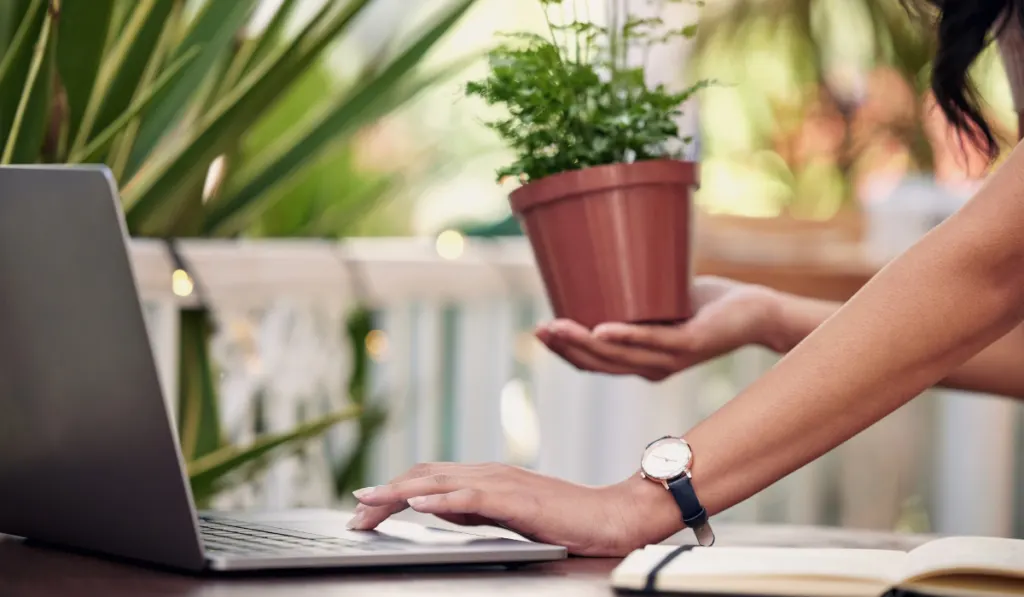
Nursery Startup Costs
You may need from $30,000 to $100,000 or more for land if you don’t already own enough. The larger the place, the higher the cost. Location also often affects the price. However, you do not need to pay the entire price at once.
As for the retail storefront, you might require an extra $50,000 investment. Your startup plants, equipment, soil, and other supplies can cost from $10,000 to $50,000 according to the number of plants that you want to start with.
You should also consider the salary of staff as well as inventory, water, and chemicals as they will be your largest expenses while running the business. The size of the nursery is the major factor that can affect the startup cost.
If you choose to start with a few plants to sell locally in your neighborhood, you might not need as much overhead as someone who wants to start a large nursery in the city.
Continue reading to learn how to set up the nursery business.
How to Setup a Plant Nursery Business
Here are some vital things you should consider to fully set up your nursery business:
1. Business Registration

You need to register your business so that you can sell your products without the fear of the government coming to shut down your facility.
Register your business name and get your business license. You need to register for taxes so that you and your business can pay the required taxes as at when due. You also need to get a business bank account so that you can keep track of the money flow.
You must check local laws and regulations before you start a business in any city so that you won’t engage in what can attract fines from the government. Also, ensure to register in different related unions and work with their laws.
2. Branding and Advertisement
This is where your business signage and advertisement come in. Even though you may be starting this business because you are passionate about it, it is not your passion that will put you in the market. You need to let potential customers know about your business with the right advertising.
To get an organic growth of customers (i.e. without much advertisement), you should attend local gardening shows in the name of your business. If possible, grow exceptionally beautiful plants and register for the shows so that people can get to see some of your nursery plants.
3. Insurance

Insurance is important because you do not know what can hit your business as well as when it can hit you. You need to research the risks involved in your nursery so as to know the best insurance plan for you. Some risks include natural disasters, equipment going bad, thieves stealing your equipment and plants, etc.
4. When You Get Your First Customers
Nothing is as thrilling as getting your first customers. Before you get your first customers, you need to ensure that you have grown beautiful plants and that the plants are ready for transplanting. Ensure that you have enough maintenance products in case your customers ask for them.
You also need to think about transportation of the plants. Some customers—especially if you are selling online—will need you to send the plants to them. Have you considered how you’d send them the plants?
5. Moving Forward
Here are some extra tips for you after setting up your nursery as well as how to attract customers:
- Get plants from other nurseries: Sometimes, your customers might order plants that you do not have (yet). To supply their demands, you need to get plants from other nurseries. This means that you need the contacts of other nurseries.
- Collect feedback from customers: You should sometimes communicate with your customers and ask them what they think about the plants. Also, ask them if there is anything they feel you should do for a better experience.
- Give customers some growing tips: If you see the need to help your customers, do not hesitate to help them.
- Ask customers to share photos of your plants: This can help boost your online presence. You can start a hashtag competition online where your customers can upload beautiful pictures of their plants and win rewards.
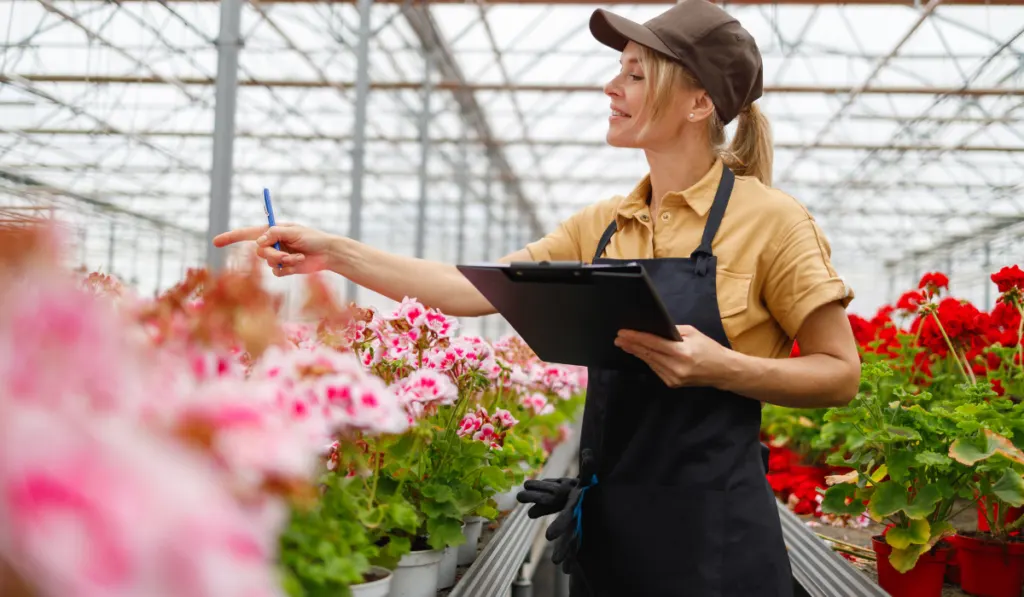
Pricing of Nursery Plants
Plants can be priced at any amount based on a range of factors. For example:
- Plants from seeds or cuttings: Generally, plants started from cuttings cost more than those grown from seed. Cuttings cost more to obtain and are more labor intensive to get established than seeds, but can fit into production schedules better than seed-grown stock. Which is more profitable for you will depend on the crops you grow and what it takes to get them to a finished product.
- How rare the plant is: The more exotic the plant is, the more it will cost.
- Plant accessories: The plant can be priced higher when it comes with an ornate pot, trellis, or a unusual type of mulch.
Depending on the number of sales and cost of your plants, you can make profits ranging from $40,000 to $625,000 or more annually.
Related Questions and Answers
If you have more questions, here are some potential answers:
1. Why Are You Not Getting Customers?
Here are some reasons why you may not be getting customers:
- Consider what sells in your area: You may be living in an area where people prefer landscaping plants to popular flowers. For example, you may be in a place where you ought to be selling hedge or border plants, but you are selling sunflowers and other beautiful garden plants. It would help to know the type of plants that your customers need and want (based on popular demand).
- Employ or consult with more sales and advertisement people: You may be the best at growing plants. This does not mean that you are the best at marketing products. Allow the marketers to do their job.
You also want to make sure that your plants are as beautiful as they look in your ads.
2. Why Are Your Nursery Plants Not Growing?

Here are some things that you should consider:
- Consider the substrate: Are you using the same substrate for every plant? Different plants have different substrate requirements, so do not use the same substrate for every plant.
- Type and quantity of water: Ensure that you do not overwater your plants. Also, research each plant to know the type of water that they need.
- Sterile or fertile seeds: Did any plant germinate? If your answer is no or only a few germinated, then check the seeds to see if they are truly fertile.
- Temperature and other atmospheric conditions: Plants have specific temperature, humidity, and light needs, so grow them in the perfect location if you want them to grow well.
- You may need more time: Some plants need weeks to germinate, so do not be hasty.
Note that it is best that you work or learn in a plant nursery first before you start yours so that you can gain the necessary experience to grow plants.
3. Do You Need a Greenhouse?
If you plan to grow rare plants or plants that are not native to your area, you need a greenhouse. This ensures that you can control the humidity, temperature, and light to match the natural habitat of the plants that you want to grow. If you are growing regular plants that match your USDA zone, you may not need a greenhouse.
Aside from the type of plant that you are growing, you may also need a greenhouse to prevent pests from reaching your plants.
4. How Do You Grow Your Plants in a Controlled Environment?

Here are some factors that you want to control:
- Temperature: To make the greenhouse cooler, you need rooftop vents, operable windows, or exhaust fans to keep warm air moving. You also need a shade cloth to prevent the hot sun from burning your plants. To keep the greenhouse warm, you need an electric heater.
- Light: First of all, ensure that your greenhouse or nursery is built in a place with access to eight or more hours of sun daily. It is better for light exposure to be too much than not enough so that you can save the money you would have used to buy grow lights. To reduce light exposure, make use of shade cloth.
- Humidity: You can use a humidifier or dehumidifier to control the humidity levels of the greenhouse.
Remember that each plant has its preferred growing condition. Also, remember that you will spend more to heat the greenhouse in winter.
5. What Else Can You Add to Your Nursery Business?
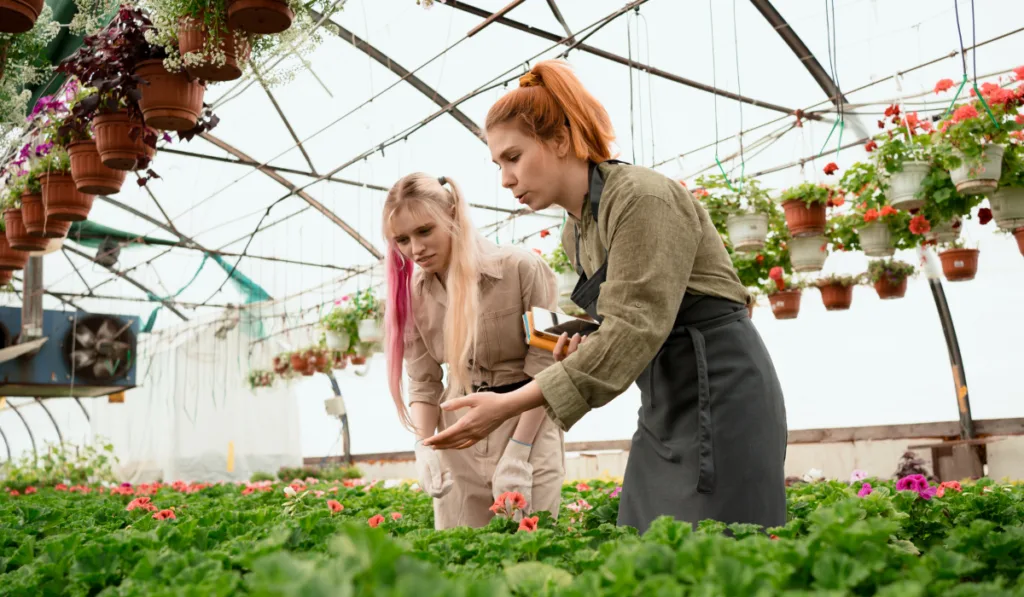
If you want to add other products or services to your nursery business, here are some ideas:
- Composting: You surely need compost for your plants, so what if you make your own by yourself and even supply it to people?
- Organic Fertilizer: People growing plants in a strictly organic garden will surely buy your fertilizer. Ensure that the fertilizer is well-decomposed, and it works before you sell it to people.
- Potting Mix: You can make your own potting mix and sell it to people. Remember that different plants have their preferred types of mixes.
- Pots: Making pots is difficult, consider buying pots, decorating them, and then selling them to your customers.
- Consultancy: If you are an expert and can grow plants with ease, you can help people to fix their gardens or lawns if they have any problems.
Before adding these products and services to your nursery business, please check the local laws or unions if there is anything that you need to do first.
Conclusion
The nursery business is truly a good business. Remember that you are dealing with living organisms, so you want to make sure that you properly treat your plants. If your plants die, you will lose money, so ensure that you grow the healthiest and most beautiful plants.
Resources
- https://www.wikihow.com/Start-a-Plant-Nursery-Business
- https://beeandbasil.com/build-seedling-nursery-5-easy-steps/
- https://crazycrittersinc.com/building-a-greenhouse-nursery-why-and-how/
- https://howtostartanllc.com/business-ideas/plant-nursery
